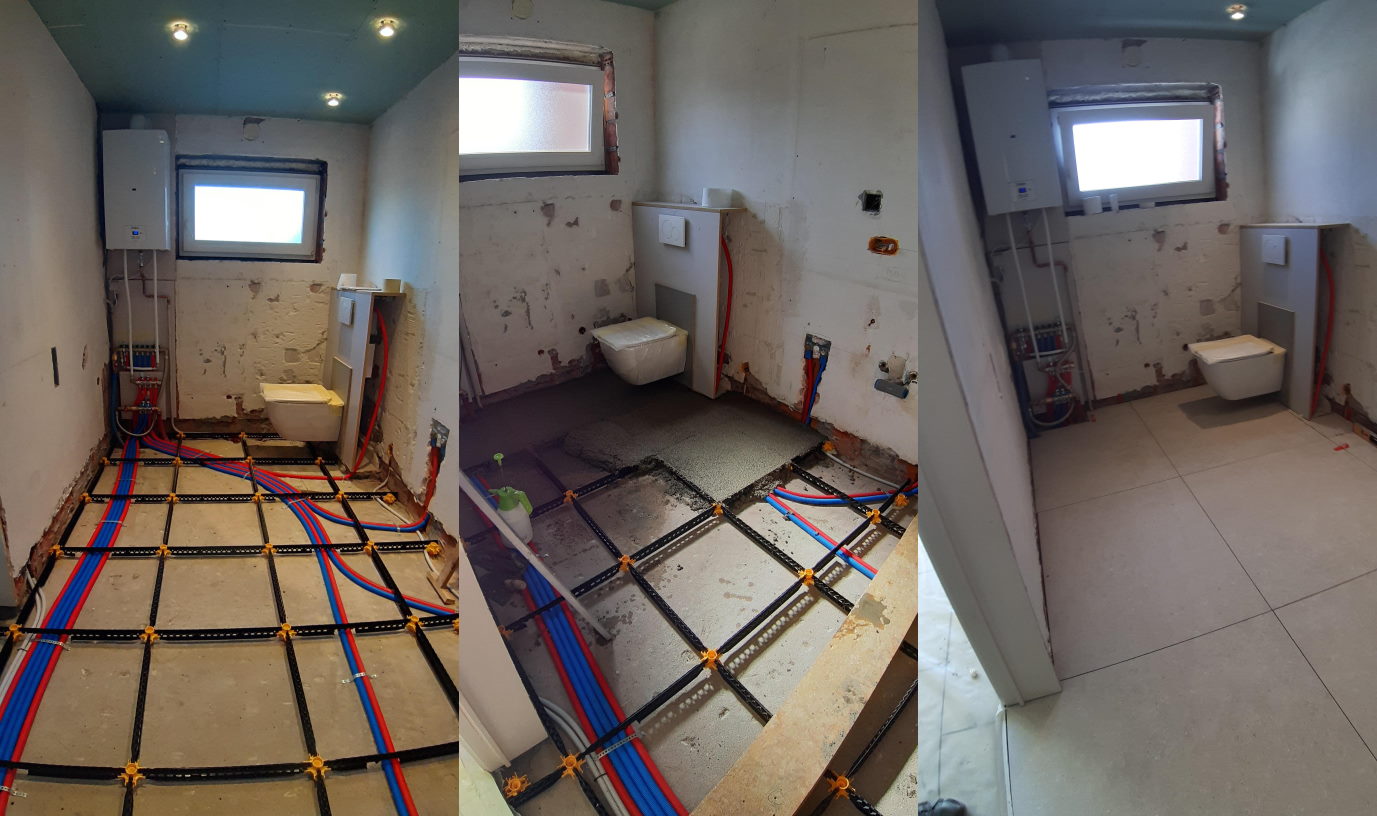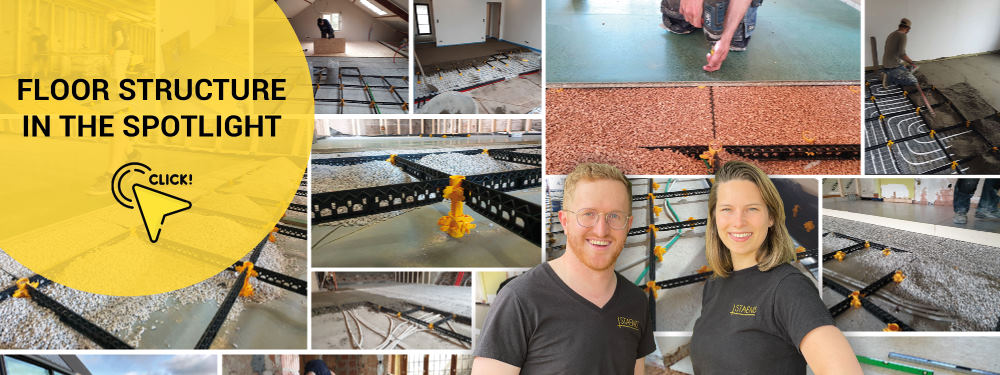How to screed your bathroom with Staenis
By Staenis | 18/06/2021
How to screed your own bathroom?
Is a new floor being installed in your bathroom? Keep in mind that for a durable and level bathroom floor, you need a strong screed or subfloor. This forms the ideal base for your chosen floor finish. Discover how you can lay your own screed in your bathroom, even if you have no experience.
Bathroom screeding? Use a handy DIY system.
The screed in your bathroom must be installed in such a way that no irregularities, cracks, or fissures can occur. If you want to lay your screed or chape yourself as a DIYer, it’s best to use a reliable tool: the StaenisGrid. This handy self-build system is specially developed for do-it-yourselfers. It consists of slats and height-adjustable legs, which can be easily leveled. A suitable filling material, such as screed, insulating screed, or leveling granules, is placed in the grid. Your tiles or OSB boards are then laid on top. Why use the StaenisGrid? If you work with this screed grid, you can be sure of a durable, even, and crack-free result. Curious about this surprisingly simple way to lay your own screed? View the screed grid from Staenis here and learn more about the benefits.
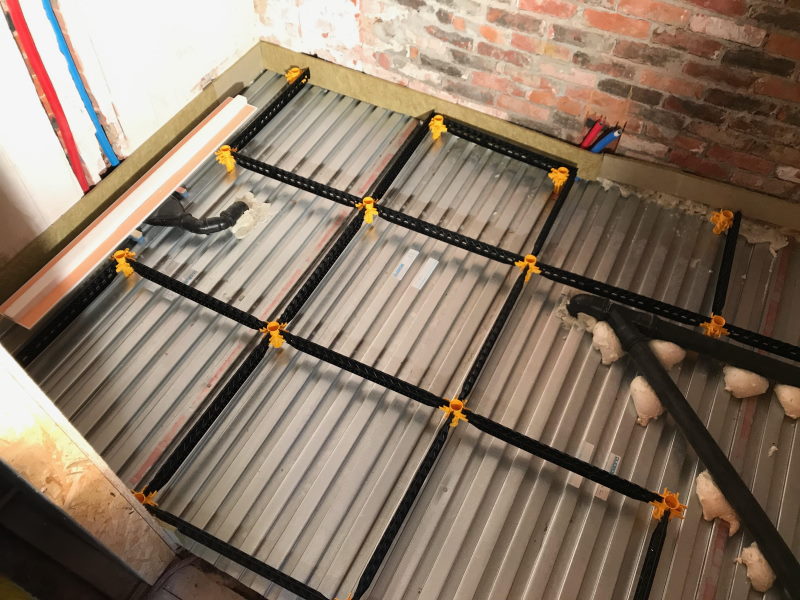
Laying a screed in the bathroom: what do I need?
What do you need to screed your own bathroom with the StaenisGrid? To find out, you need to know how you are going to finish your bathroom floor. Depending on the floor finish you want, you choose the suitable filler for the screed grid. Rest assured, you can combine the StaenisGrid with various floor finishes: tiles, natural stone, laminate, parquet, cork, vinyl, and so on. Curious which filler you should get? Check it quickly with this floor build-up tool. In one go, discover the ideal build-up for your bathroom floor. Then calculate with the quantity calculator how much filler and grid components you need for your project. With the help of this shopping list, you can order your supplies in the Staenis webshop.
Which screed should I choose for my bathroom floor?
There are various floor structures possible in a bathroom. Check below for the floor finish of your choice and learn which fillers you can use to fill the StaenisGrid:)
-
Bathroom floor with tiles or natural stone
If you want to finish your bathroom floor with tiles or natural stone, you can fill the StaenisGrid with sand-cement screed. The drying time is about 28 days. Prefer a shorter drying time, even if your screed costs a bit more? In that case, it’s better to choose fast-drying screed. If your screed needs to dry quickly but also insulate well, it’s best to go for tillable insulation screed. Discover the ideal floor build-up for your project here.
-
Bathroom floor with laminate, parquet, vinyl or cork
Will you cover your bathroom floor with laminate, parquet, vinyl, or cork? Then choose an insulation screed or leveling granules with OSB boards to obtain an insulating and perfectly level subfloor for your bathroom. Learn more about the ideal structure of your bathroom floor.
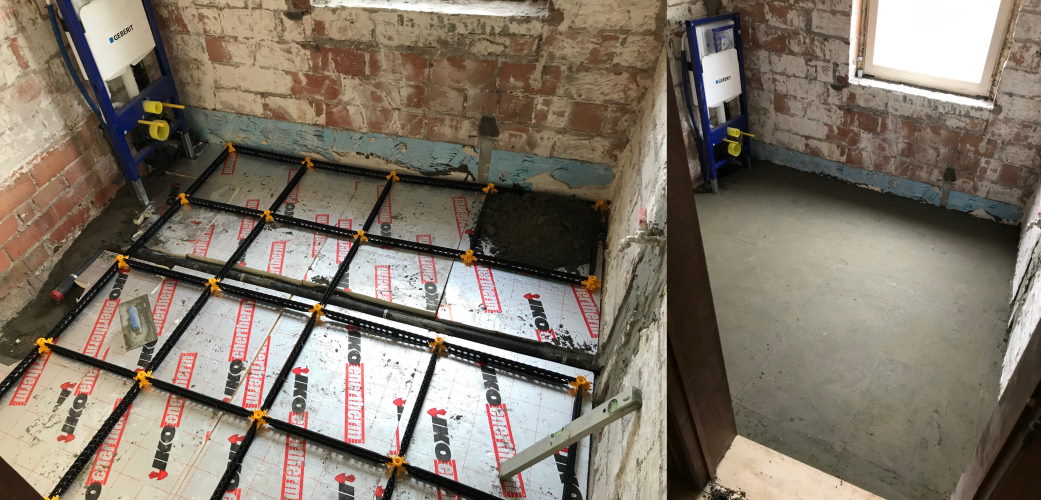
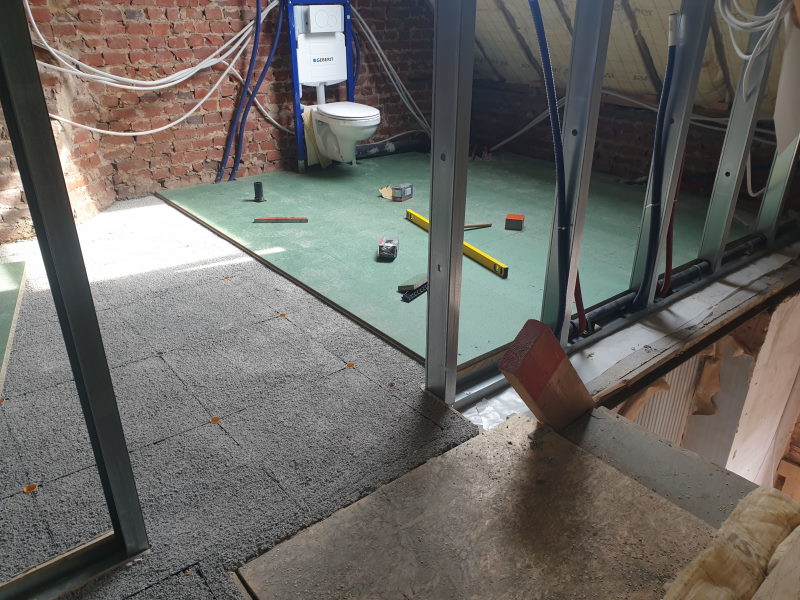
How to install your own bathroom floor: step-by-step guide
Another good reason to use the online floor construction tool: you immediately discover a customized manual for laying your screed. Handy installation videos also appear on the screen. In short, you can screed your own bathroom as follows:
-
Place the StaenisGrid and adjust the height. Tip: if you are going to use OSB boards, you need to take this into account when adjusting the height of the StaenisGrid.
-
Fix the grid with polyurethane foam from a can. This way, the height adjustment and the position of the grid remain correct.
-
Fill the grid with the recommended filler. Also provide edge insulation, unless you are working with insulation screed or levelling granules and OSB panels.
-
Finish with leveling compound (for tileable insulation screed), or with OSB boards.
-
Finish your screed with a floor covering of your choice, tailored to the infill material used.
Tip: If you place the StaenisGrid flat in advance, you can fill it at your own pace with a filler of your choice and finish it further. This way, you don't have to worry about the height of the grid or the duration of your job. You apply the filler with a bucket, tub, bag, etc., while walking over the grid. You can also bring in the filler with a wheelbarrow, but then you need to click out a few slats from the grid to create a path to a suitable spot to pour out the filler.
At what heights can you set the StaenisGrid?
How high can a screed be when using the StaenisGrid? With this screed grid, different heights are possible. The slat is 4.5 cm high and can locally be cut down to a height of 1.5 cm. This is, for example, useful for allowing utilities to pass through. The leg of the grid is also 4.5 cm high, the minimum height needed for easy installation of the StaenisGrid. If you use the StaenisGrid to screed your bathroom, the following grid heights are possible:
-
4.5-9 cm, with a standard Staenis foot.
-
6.5-10.3 cm, with a standard Staenis leg and a Staenis slat placed on its side.
-
9-13 cm, with a standard leg and extension leg.
-
From 4.5 cm + thickness of the plate under the StaenisGrid, with a standard Staenis foot and thickness plate of your choice.
-
From 9 cm + thickness of the plate under the StaenisGrid, with a standard Staenis leg, extension leg, and thickness plate of your choice.
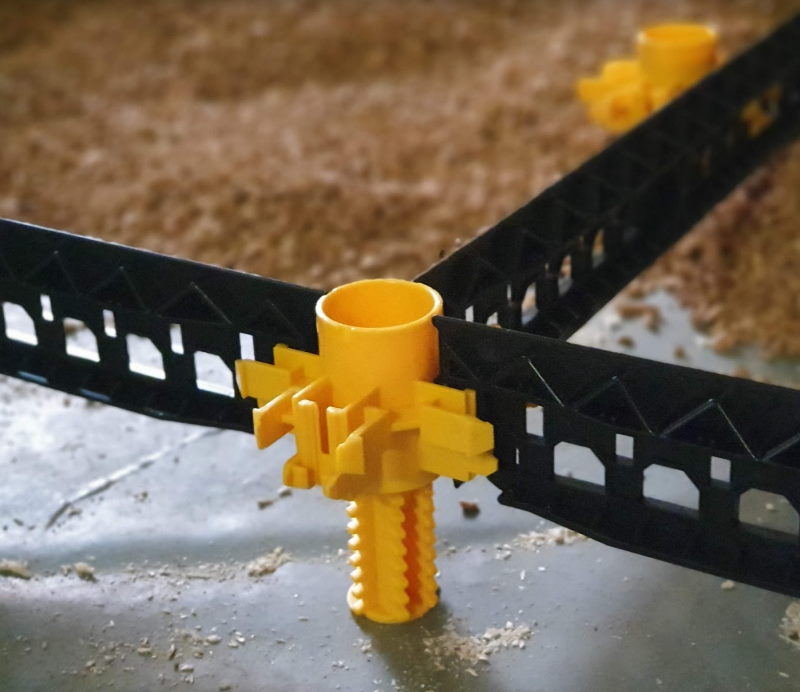
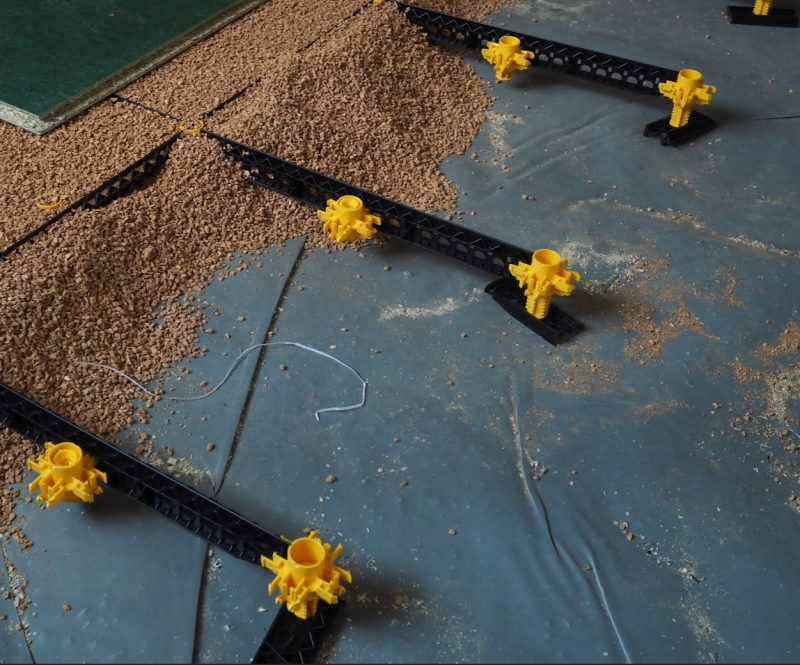

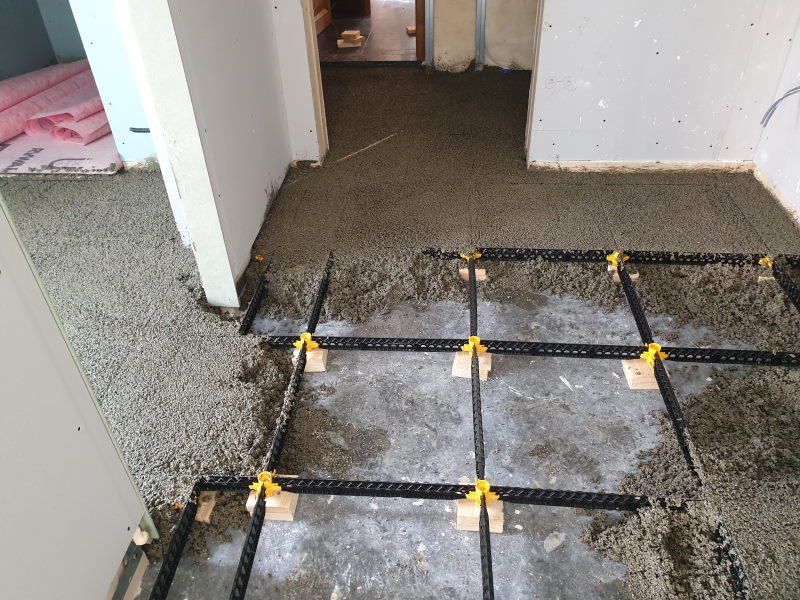
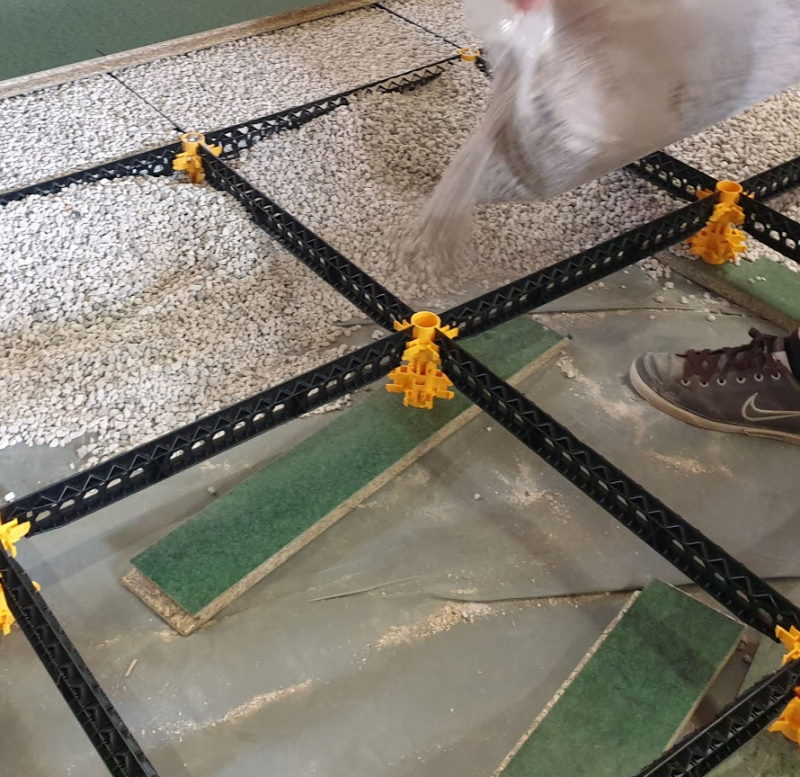
If there is not enough height available, you can create two sections of the StaenisGrid next to the drainpipe and connect them using a standard reinforcement mesh.
Are you considering screeding your bathroom yourself using the StaenisGrid? A great plan, because this way you don't need to rely on a professional screeder. By choosing the StaenisGrid, you also avoid many common types of damage. Watch a demo of the Staenis DIY system here and learn here how to get started. Off you go!
